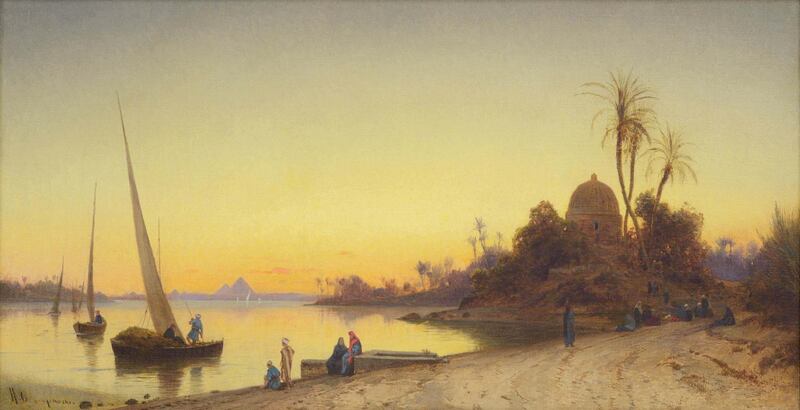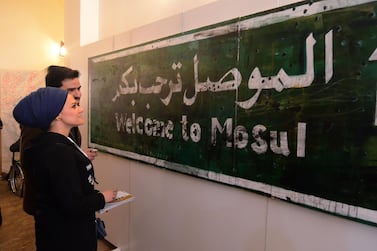Art that carries the "Orientalist" tag often leaves the unsettling aftertaste of western painters exoticising a primitively conceived idea of "The East". But, for those who call the region home, the movement's historic, dewy-eyed representations offer increasingly invaluable snapshots of life in the Arab world, in the days before photography became widespread.
The era, area and artistic styles are celebrated in an exhibition on display at Alliance Francaise Dubai, called 1900 Orient, an Exhibition of Orientalist Paintings, showcasing select works from notable European artists. Curated by Dubai's Monda Gallery, the highlights of the exhibition include stark Bedouin portraits by Austrian artist Leopold Carl Muller and distinct scenes from three celebrated Italian painters – Hermann David Salomon Corrodi, Rubens Santoro and Gustavo Simoni.
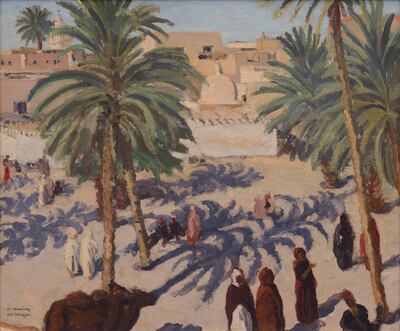
Those works comprise two vivid, complementary Egyptian landscapes by Corrodi, Santoro's dreamy oil painting Crossing the River on a Camel, and an intricate watercolour by Simoni, A Carpet Seller in a Souk in the Maghreb.
"These European artists were looking for something different – different places, different light, different subjects," says Philippine Motais de Narbonne, an art historian who lives in the UAE. "There's a sense of discovery."
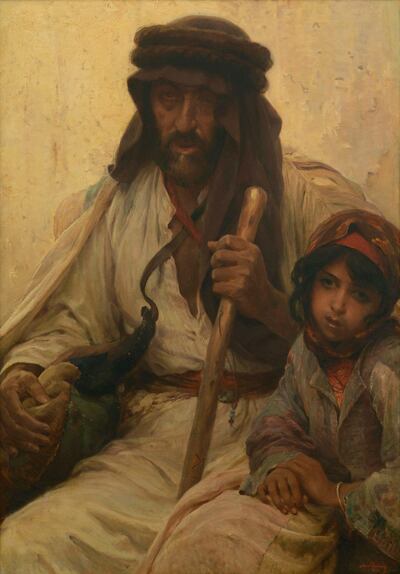
The collection also features work from Austrian painters Alois Hans Schram, Max Schodl and Ludwig Hans Fischer, as well as Frederic Marius De Buzon of France and Germany's Georg Macco, whose Oriental Scene captures the hustle and bustle of Cairo's famous bazaar district Khan el-Khalili. This collection evokes contrasting visions of the Middle East around the turn of the 20th century. Both the exhibition's contents and the roots and legacy of the wider movement will be explored in an accompanying lecture, An Introduction to European Orientalists, which will be delivered by Motais de Narbonne on Wednesday.
"These paintings are like postcards for tourists, scenes from another century," she says. "Camels, for example, were a totally new subject for painters – nobody had seen anything like them before."
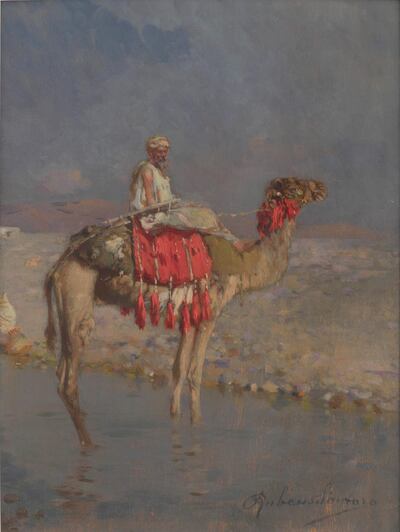
Coined contemporaneously by the French, the Orientalist school was less an artistic movement than a commercial trend, blossoming as 19th-century European collectors became more fascinated by unfamiliar lands explored by their expansionist empires.
Typical works depict scenes of everyday life from the Maghreb to the Levant, and across the Arabian Peninsula. Despite the geographical range, these snapshots strike a chord with local audiences today – they feel a familiarity with the omnipresent desert, lively markets, architecture, colours and mood.
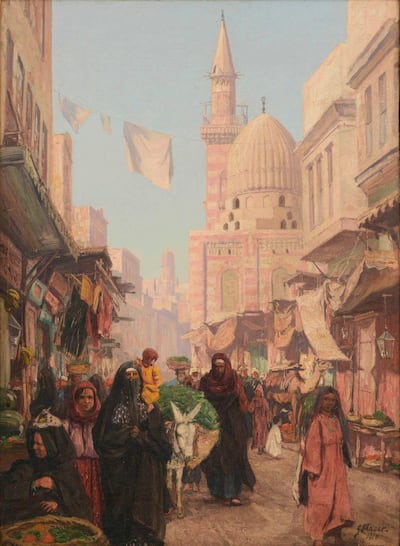
Interest in these works has intensified in the past two decades, fuelled in part by collectors in the Gulf; online art gallery Monda says that the market for Orientalist art increased eight-fold between 2004 and 2008. The Sharjah Art Museum reportedly hosts one of the world's largest collections, while Louvre Abu Dhabi has made significant acquisitions already.
"At the time, Orientalism was, for the western public, an open window to a new, unknown and exotic world," says Etienne van den Peereboom, one of two Belgian brothers who founded Monda.
"Thanks to its popularity, it mobilised some of the best artists of the period and left us with a body of work of very high quality. Now it offers a unique historical visual record of the late 19th and early 20th century in Arab countries, and a peek into how the West viewed them."
And now we get to the unpleasant after taste. The Orientalists were explorers as much as artists, and today, their work holds more historical value than artistic worth, generally favouring 19th-century Realism, immune to the changing trends of Impressionism, and everything that followed.
Not that Orientalists were objective chroniclers. Charged with giving their domestic audiences ever-wilder visions of untamed lands, their work inevitably plays to the extreme and the exotic. Present in the Monda collection are all the shorthand cliches readily used to invoke the region's otherness – camels and carpet-sellers, minarets and palm trees – contemporary stereotypes these paintings no doubt helped to introduce and propagate.
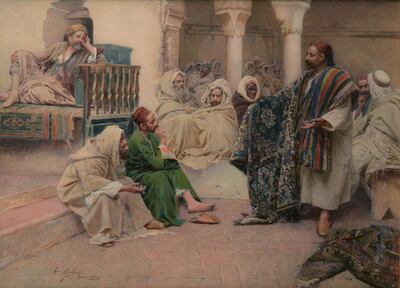
Even the most earnest accounts still come through the detached prism of a colonising force; it is notable that interest in Orientalism was sparked after Napoleon's failed invasion of Egypt in 1798. By reinforcing an idea of "us and them", a sense of western superiority is inevitably implied – a viewpoint that drew widespread traction through academics such as Edward Said, the author of 1978's influential tome Orientalism.
"I don't think it's patronising," says Motais de Narbonne. "In the past we've understood 'Orientalism' as a negative term, but I would like to say it's part of art history – and a part of the region's history.
“These artists are witnesses of a particular time. You have to understand these painters inside of art history.”
Motais de Narbonne will make efforts to establish this valuable context at her lecture, which will trace the Orientalist movement from the 1700s to the early 20th century, while also examining the 11 works in the 1900 Orient exhibition.
The lecture is the first to be given in English, as part of an ongoing art history series hosted by Alliance Francaise Dubai. However, if the turnout is good, future monthly instalments will also be delivered in English. Subsequent lectures will examine contemporary art, with a focus on the upcoming Art Dubai and the Sharjah Biennial, on March 4 and April 8, respectively.
"We've had a great response from the public, there are a lot of people in the UAE who really want to discover more art," she says. "People have been waiting a long time for things like this.
"Louvre Abu Dhabi has had one million visitors in one year – I'm sure that has had a huge impact. The aim of this project was educational, to show visual art to people, and this is going very well."
1900 Orient – An Exhibition of Orientalist Paintings is at La Galerie, Alliance Francaise Dubai, Oud Metha, until February 27; 9am-7.30pm from Sunday to Wednesday, and 9am-5pm on Thursday and Saturday. An introduction to European Orientalists lecture will take place at Alliance Francaise Dubai Theatre, Oud Metha, on Wednesday at 7.30pm; Dh45.
